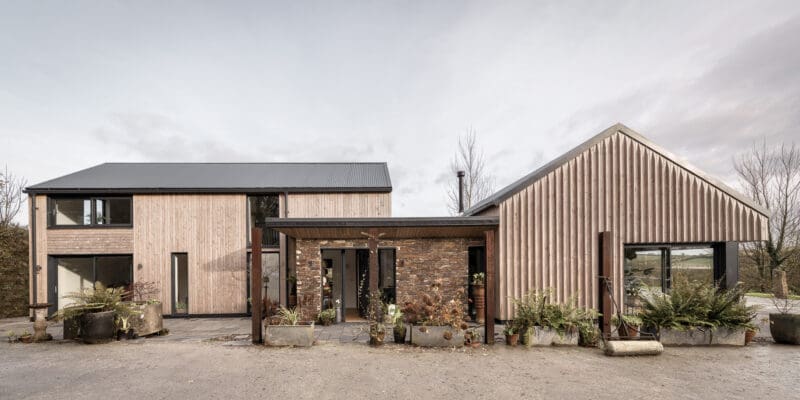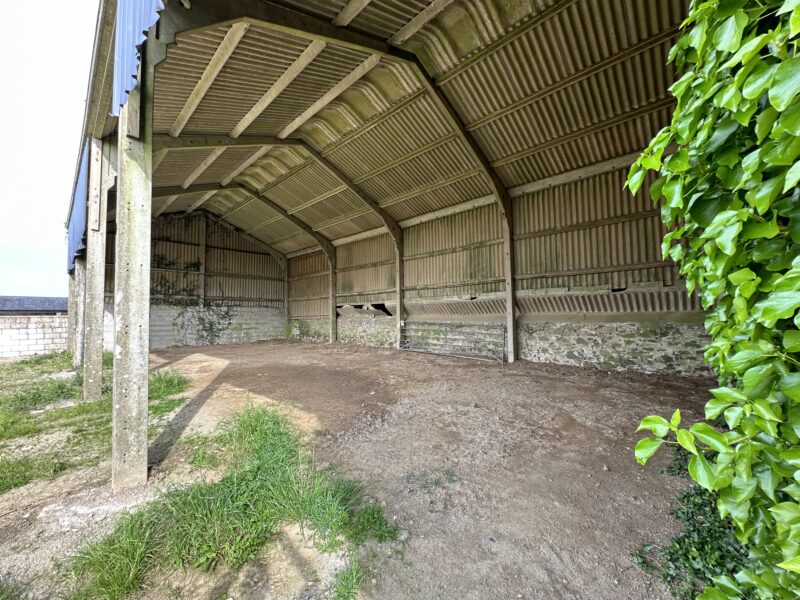Introduction
Class Q permitted development is a planning right in England that allows existing agricultural buildings, most commonly barns, to be converted into residential dwellings without the need for full planning permission. This right falls under the Town and Country Planning (General Permitted Development) (England) Order 2015, Schedule 2, Part 3, Class Q.
To convert a barn into a home under Class Q permitted development, several requirements must be met. The legislation recently changed, with the old Class Q provisions phased out in May 2025.
What Did the Old Class Q Legislation Allow?
Under the previous rules, Class Q allowed the creation of up to three dwellings, with a combined floor area of no more than 465 sqm. This could either be split among three homes or used to create a single large dwelling. Numerous projects have taken advantage of this, including examples like VESP architects’ Higher Dorsley.

What Are the New Class Q Permitted Development Rules?
As of May 2025, the updated Class Q legislation allows for more flexible barn conversions, including:
- Change of use of barns that were part of an agricultural unit before 24th July 2023 into residential dwellings.
- Creation of up to 10 dwellings with a total floor area not exceeding 1,000 sqm.
- No individual dwelling can exceed 150 sqm in floor area.
- External dimensions can be expanded by up to 200mm, to accommodate insulation, new cladding, etc.
- Single-storey extensions are now permitted.
- Installation or replacement of windows, doors, roofs, and external walls.
- Provision of essential services such as water, drainage, electricity, and gas.
- Other necessary works to ensure the building can function as a home.
- Partial demolition of the barn, if needed, to carry out the above works.
Rules for Extensions Under Class Q
Sub-rules exist for extending barns during conversion. To qualify under Class Q permitted development, the extension must:
- Be single-storey in height.
- Be located on the rear elevation of the barn.
- Extend no more than 4 metres from the rear wall.
- Have an eaves height no greater than the original building.
- Be no taller than 4 metres from ground level, or no taller than the existing structure.
- Be built on ground already covered by a hard surface.
How Much of the Original Barn Must Be Reused?
The Class Q permitted development policy is designed for conversion, not complete replacement. Therefore:
- Full demolition and rebuilding is not allowed.
- Inspectors have noted that installing new foundations, ground slabs, or upper floors often falls outside the intent of Class Q.
According to the Government’s Planning Practice Guidance:
“It is not the intention of the permitted development right to include the construction of new structural elements for the building…”
A structural survey is typically required with a prior approval application to demonstrate that the existing structure is capable of supporting the proposed conversion.
Is a Planning Application Still Required?
Yes, while Class Q removes the need for full planning permission, you must still apply for prior approval from the local planning authority. This application ensures that the following are acceptable:
- Transport and highway impacts
- Noise impacts
- Contamination risks
- Flood risk
- Whether the location or siting is impractical or undesirable for residential use
- Design and external appearance of the proposed conversion
- Availability of natural light in habitable rooms
- The impact of any extension on neighbouring properties
Once prior approval is granted, the conversion must be completed within three years. This differs from traditional planning permissions, where construction must simply begin within three years.
How Do the New Rules Affect Class Q Barn Conversions?
The changes bring both advantages and limitations:
Pros:
- The barn must have been in agricultural use only by 24th July 2023, rather than 20th March 2013 as previously required. This opens the door to converting newer agricultural buildings.
Cons:
- The maximum size for a single dwelling is now 150 sqm, down from 465 sqm. While a comfortable 3-bedroom home can still be achieved, larger dwellings are no longer allowed under Class Q.
If a larger home is desired, you’ll need to consider a “betterment” planning application.
What is a ‘Betterment’ Planning Application?
Once you have Class Q prior approval, it is possible to submit a full planning application for a new dwelling in place of the barn conversion. This is called a betterment application.
Benefits of a betterment application include:
- Improved site layout, such as moving the dwelling away from boundaries or listed buildings.
- Enhanced sustainability – better insulation, use of timber frame construction, or low-carbon materials like blown cellulose insulation.
- More freedom of design, enabling higher-quality architecture that fits better into the landscape.

VESP Architects and Class Q Barn Conversions
VESP architects have been working on and achieving permission for Class Q barn conversions ever since the legislation came through. With close ties to planning consultants across the south of the UK, and with a back catalogue of successfully completed homes, we have the expertise to help you with your own project, be it assessing your existing farm buildings, or helping you if you’re looking to purchase a barn with the wish to build your own home.
Contact us today to discuss your Class Q permitted development project.


